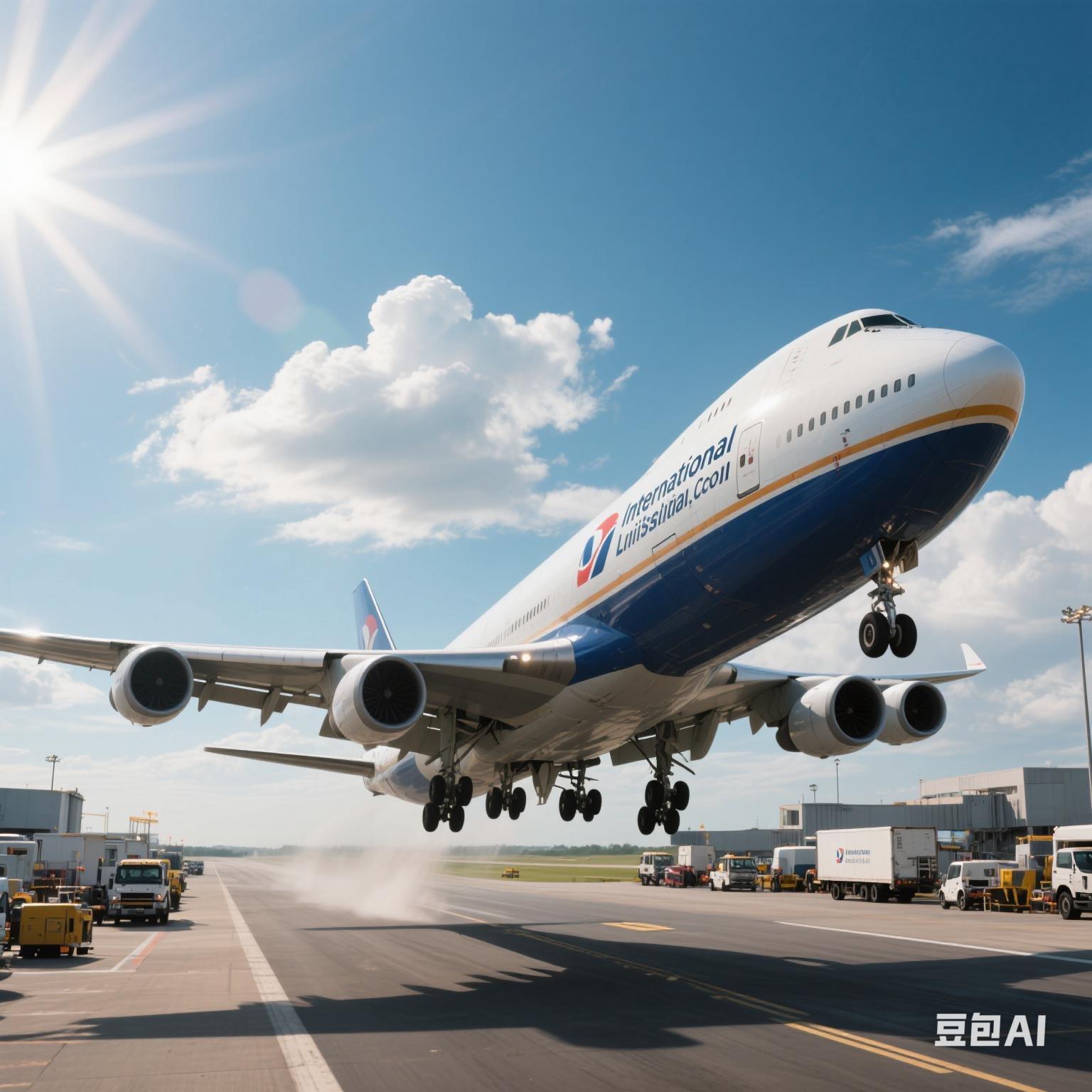הבנת עולם המחירים המורכב במטענים אוויריים
העלויות של משלוחים אוויריים מייצגות אחת ההוצאות המשמעותיות ביותר בלוגיסטיקה וניהול שרשרת האספקה העולמית. האופי הדינמי של עלויות אלו יכול להקשות תקציב ותחזיות עבור עסקים בכל הגודל. למרות שהמטען האווירי מציע מהירות ודיוק בלתי מתחרים למשלוחים בינלאומיים, קיימים גורמים רבים שמשפיעים על מבנה המחירים הסופי. הבנת הרכיבים הללו היא קריטית לחברה המבקשת למזער את הוצאות המשלוח תוך שמירה על תפעול יעיל.
תעשיית משלוחי האוויר פועלת בתוך מערכת מורכבת שבה משתנים רבים מתחלפים ומתפתחים כל הזמן. ממחירים של דלק ועד ביקוש עונתי, כל אלמנט מoplay תפקיד חשוב בצורת מבנה העלות הכללי. מדריך מקיף זה חוקק את הגורמים המרכזיים המשפיעים על עלויות משלוחי האוויר ומציע תובנות לניהול הוצאות אלו בצורה יעילה.
גורמים עיקריים שקובעים את עלות משלוחי האוויר
משקל וגורמים ממדיים
היחס בין משקל לרווח הוא עיקרון בסיסי בחישוב עלויות משלוחי האוויר. חברות התעופה משתמשות במודל מחירים מתקדם שמבוסס על משקל ממשי או משקל נפח (משקל ממדי), כל עוד הוא גבוה יותר. המערכת הזו, הידועה בשם עקרון המשקל החייב, מבטיחה מחירים הוגנים גם עבור פריטים צפופים וגם עבור פריטים נפוחים.
משקל ממדים מחושב על ידי הכפלת האורך, הרוחב והגובה של חבילת משלוח, ולאחר מכן מחלקים בגורם ממדי. השיטה הזו מונעת משלוחים קלילים אך תופסים שטח מיותרים מלהיות מוערכים בטעות. הבנת החישוב הזה היא קריטית לעסקים כדי למקסם את אריזתם ולצמצם потנציאלית את עלות משלוח האוויר.
שיקולים של מרחק ומסלול
המסלול האווירי בין נקודת המוצא ליעד משפיע משמעותית על עלות משלוח האוויר. מסלולים ישירים לרוב מחייבים תעריפי פלטינום אך מציעים זמני העברה קצרים יותר. מסלולים מרובי קטעים עשויים להציע חיסכון בעלות אך גם מאריכים את זמן המשלוח ומעמיסים על הסיכון הנוגע לעיבוד החבילה.
גורמים גיאוגרפיים גם הם תורמים משמעותית. יעדים נידחים או מיקומים עם שירות מוגבל של משלוחים אוויריים לרוב מחייבים עלויות גבוהות יותר עקב היעדרות תחרות וקושי ביישום הלוגיסטי. מסלולים פופולריים בין מוקדים מרכזיים לרוב מציעים תעריפים תחרותיים יותר עקב שכיחות טיסות גבוהה ותחרות מעצימה בין חברות מובילות.
שיקולי מחירים מונעים על ידי השוק
תנודות ביקוש עונתיות
תעשיית משלוחים אווירים עוברת תנודות עונתיות משמעותיות אשר משפיעות ישירות על המחירים. בעונות שיא, כמו חופשות או עונות קציר למוצרים מתכלה, רואים עלייה חדה במחירי משלוחים אווירים עקב מגבלת תכולה וביקוש מוגזם.
הבנה של דפוסים עונתיים אלה מאפשרת לעסקים לתכנן משלוחים בצורה אסטרטגית, ובכך לאבטח מחירים טובים יותר בתקופות שאינן שיא. חלק מהחברות בוחרות לנהל משא ומתן על חוזים לטווח ארוך עם חברות משלחות כדי לאפשר יציבות במחירי המשלוחים לאורך השנה, אם כי הדבר עלול לגרום להחמיצת הזדמנויות זמניות בשוק הספוט.
נשיות במחירי הדלק
Маיתות הדלק מהוות רכיב משמעותי בעלויות משלוחים אווירים, לרוב הן מהוות 20%-30% ממחיר הסך הכל. המיתות האלה משתנות בהתאם למחירי הנפט העולמיים והן יכולות להשתנות מדי שבוע או מדי חודש, מה שהופך אותן לגורם חשוב במשתנה העלות.
חברות תעופה מוסרות בדרך כלל את עלות הדלק המוגזמת ללקוחות באמצעות מנגנון תוספות. אם כי חלק מהמשגרים הגדולים עשויים לנהל משא ומתן סביב תוספת דלק קבועה לתקופות ארוכות, רוב העסקים נאלצים להתאים את תקציבי הלוגיסטיקה שלהם להסתגלות מתמדת.
שיקולים תפעוליים וברמת השירות
דרישות טיפול ושרותים מיוחדים
צורך בטיפול מיוחס עשוי להשפיע משמעותית על עלויות משלוח אווירי. משלוחים בעלי טמפרטורה מבוקרת, סחורות מסוכנות, מטען ענק, או פריטים הדורשים אמצעי אבטחה מיוחדים – כולם מחייבים בדרך כלל תוספות עלויות. השרותים הנוספים הללו דורשים ציוד מיוחס, כוח אדם מקצועי, וברוב המקרים תשתיות איחסון ייעודיות.
עלויות הביטוח משתנות גם בהתאם לערך המטען ולגורמי הסיכון. משלוחים בעלי ערך גבוה או סחורות הדורשות תנאי טיפול ספציפיים עשויים לעמוד בפרמיות ביטוח גבוהות יותר, מה שתורם לעלויות ההובלה האווירית הכוללות.
אספקה בזמן אמת
שירותי משלוח מהירים או בעלי זמני משלוח מוגדרים מחייבים מחירים מתקדמים בשוק המשלוחים האוויריים. אופציות משלוח שלמחרת או במתכונת של אותו היום בדרך כלל יקרות בהרבה מהשירותים הסטנדרטיים למשלחים אוויריים. עם זאת, עבור תחומים מסוימים כמו תרופות או חלקי חילוף דחופים, היתרונות של מהירות המשלוח מצדיקים את העלות הגבוהה יותר.
בחירת הדרך בין שירותים מהירים לשירותים סטנדרטיים צריכה לשקול לא רק את עלות המשלוח הישירה אלא גם את ההשפעה האפשרית על העסק כתוצאה מזמנים מהירים או איטיים יותר של משלוח. לעיתים עלויות גבוהות יותר למשלחים אוויריים יכולות להישקף על ידי הפחתת עלויות החזקת מלאי או שיפור שביעות רצון הלקוח.
השפעה רגולטורית ואישורית
מיסי יבוא ומסים
עלויות משלוחים אוויריים בינלאומיים עוברות את תחנת התחבורה הבסיסית וכוללות מגוון מיסי מכס, מסים והוצאות רגולטוריות נוספות. ההוצאות הללו משתנות במידה רבה בין מדינות שונות ועשויות להשפיע משמעותית על סך עלות המשלוח.
הבנה של תקנות המכס ודרישות המסמכים היא קריטית למניעת עיכובים וחיובים נוספים. סיווג נכון של המוצרים ומסמכים מדויקים יכולים לסייע באופטימיזציה של תשלומי מכס ולמנוע עיכובים יקרים במכס.
תקנות אבטחה
אבטחה מוגזמת בתחבורה אווירית בינלאומית הביאה להטלה של דרישות סריקה נוספות וכלפי כך עלויות נוספות. אמצעי אבטחה אלו משתנים בהתאם למסלול ולמדינה, אך באופן כללי מוסיפים למחיר הבסיסי של התחבורה האווירית דמי סריקה ודמי טיפול.
הענות לתקנות האבטחה מחייבת הכנה זהירה וчастו אריזה או מסמכים מיוחדים, אשר כולם תורמים למחיר הכולל של המשלוח האווירי.
שאלות נפוצות
איך יכולים עסקים להפחית את עלויות התחבורה האווירית שלהם?
חברות יכולות למזער את עלות המשלוח האווירי שלהן על ידי שילוב משלוחים, בחירת זמני משלוח בתקופות לא עיקריות, דרישה על פי כמויות עם חברות מובילות, ושיפור יעילות האריזה כדי להפחית עלויות משקל נפח. בדיקה שוטפת של דפוסי המשלוח ובחר מדוקדק ברמות השירות יכולות גם הן להוביל לחיסכון משמעותי.
מדוע מחירים של משלוחים אוויריים כל כך משתנים בין מסלולים שונים?
השוני במחירים בין מסלולים נובע מהבדלים בביקוש, רמת התחרות, עלויות תפעול בנמלים שונים, צריכת דלק על פי המרחק, והיכולת להוביל מטען. מסלולים שמשמשים מוקדים מסחריים מרכזיים מציעים לרוב מחירים תחרותיים יותר מאלו שאליהם מוצעים ליעדים משניים או מרוחקים.
איך מסעירים את עלות הדלק משפיעים על עלות המשלוח האווירי הכוללת?
Маכסות דלק הן רכיב משתנה בעלויות משלוח אוויריות שמשתנות בהתאם למחירים העולמיים של הנפט. בדרך כלל הן מייצגות 20-30% מהעומלה הכוללת למשלוח, ומבוצעות בקביעות על ידי חברות ההפצה כדי לשקף את השינויים בהוצאות הדלק שלהן. המאכסות הללו מושגו בדרך כלל כאחוז מהتعرفה הבסיסית או כסכום קבוע לקילוגרם.




